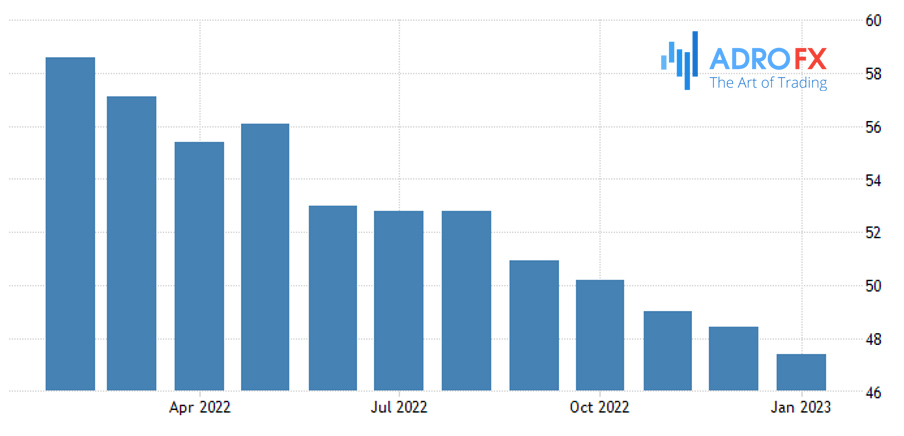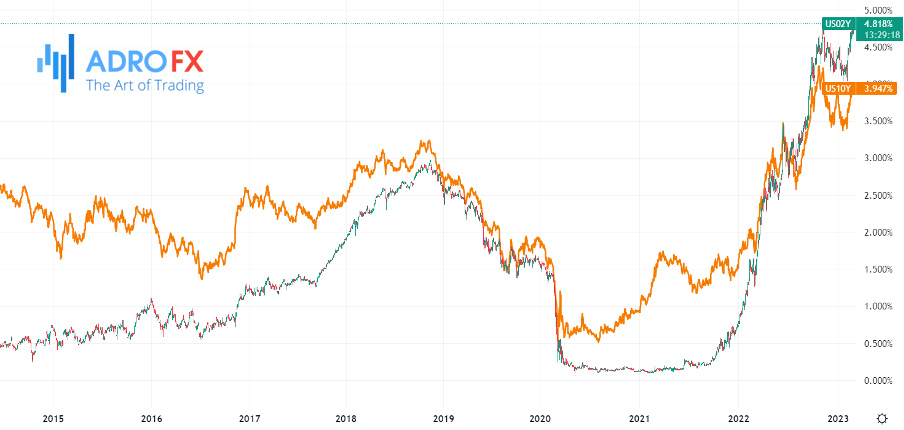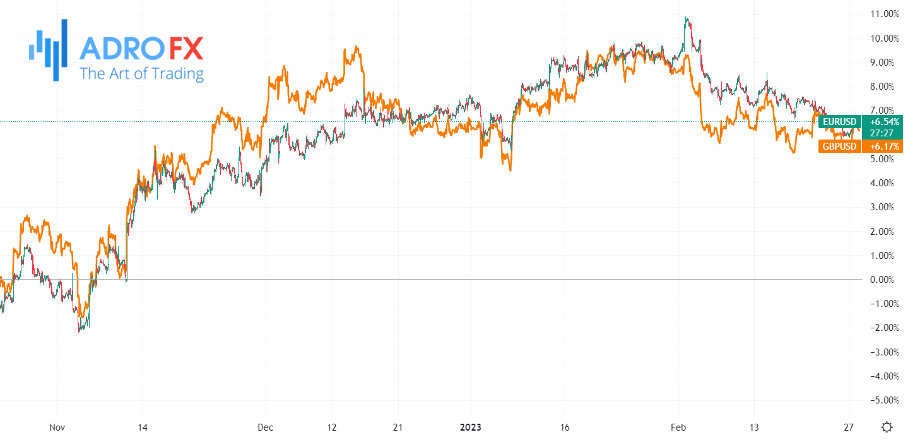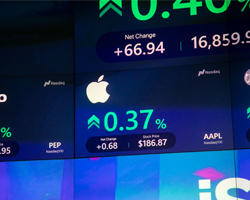Markets Tread Water As US PMI Is In Focus | Daily Market Analysis

Key events:
- Australia – Retail Sales (MoM) (Jan)
- Canada – GDP (MoM) (Dec)
- Canada – CB Consumer Confidence (Feb)
Monday saw some relief in the market after Friday's correction caused by the Core PCE. The reaction to the report can be called comprehensive, there was another significant revaluation of the Fed rate trajectory in all asset classes, and speculative momentum was definitely involved, which shifted the balance somewhat towards short-term oversold, which was corrected by the market.
There is no way to think about the market moving into a solid rally from current levels, rate futures and the Treasury debt market, especially short bonds, have factored three federal funds rate hikes into prices this year, and it will take either new incoming data or verbal interventions from the Fed to somehow correct those expectations.
An expectation adjustment could potentially come after the ISM report on U.S. service sector activity, but if there is a surprise, it is likely to be hawkish. Overly positive economic data is now a moderate negative for the market, this was already clear from the NFP, U.S. inflation, and Retail Sales data for January.

The hawkish flow of data raises the question of what the Fed's new Dot Plot, which will be released on March 22, will look like. According to the Fed's current median expectations, the rate range should be 5.00-5.25% by the end of 2023 and 4.00-4.25% by the end of '24. Both of these forecasts are likely to be revised upward. This outlook could very well put any meaningful dollar shorting on hold over the next few weeks. At the same time, the U.S. 2-10 year yield curve is now inverted in the most significant way since Paul Volcker's tightening in the mid-1980s, creating a strong headwind for the stock market:

It's hard to expect a serious influx of investors into stock markets until there are clearer signs that the Fed and other central banks can soften their tightening cycles. Along with the improvement in the macroeconomy, expectations for corporate earnings are certainly rising, but with the market consensus prevailing that we are nearing the end of the expansionary phase of the business cycle, interest rate pressures are stronger. There was hope and generally serious market betting for an end to the Fed's tightening cycle in early January, but now the odds are minimal to have such an outcome in the near term.
Among the interesting data on Monday is the monetary data on the EU. Growth in the M2 monetary aggregate (aka money supply) slowed sharply in January in the eurozone, to 3.5% from 4.1% in December and the 3.9% forecast. This suggests that the pace of credit growth by banks in the European bloc is responding to the ECB's tight policy, and at a faster pace, which improves the inflation forecast in 2023, as consumer price growth is in no small part a monetary phenomenon. Lending to households slowed to an annualized rate of 3.6%, while commercial loans rose 6.1% versus 6.3% in January.

European currencies such as EUR, and GBP rose slightly against the dollar, EUR/USD found support below 1.0550, and GBP/USD at 1.1950. The S&P 500 futures are trying to hold near 4,000 points, at the same time the European indices are rising more steadily, by 1.5% on average.
There is some potential for a breakout of 1.05 in the EUR/USD and a decline to 1.0450, but there are no catalysts to support a sustained trade below 1.05 yet, and a false breakout bet is probably the priority in that scenario. The DXY is likely to bump into resistance at 105.50.









